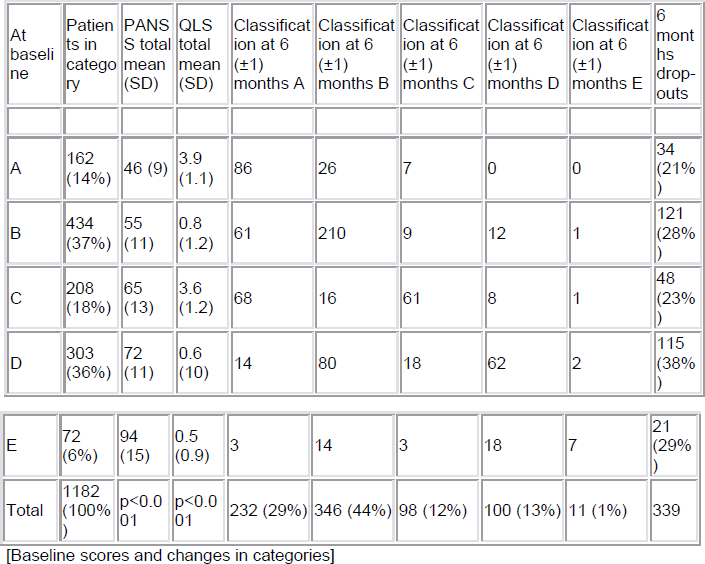No CrossRef data available.
Article contents
Improvement in patient symptoms and functioning during long-term treatment with olanzapine long-acting injection (OLAI)
Published online by Cambridge University Press: 16 April 2020
Abstract
To evaluate the outcome of patients with schizophrenia during maintenance treatment with OLAI.
Data from three studies with OLAI were pooled and patients classified according to a cluster analysis [Lipkovich, Psychiatry Res, 2009] into five categories according severity of psychiatric symptoms (sx) and functional impairment (imp):
A (minimal sx/mild imp),
B (minimal sx/moderate imp),
C (moderate sx/mild to moderate imp),
D (moderate sx/severe imp),
E (moderate to severe sx/severe imp).
Improvement was defined as a change from B or C to A, or from D or E to A, B or C. Changes between the categories in the 6 months were analyzed. Stepwise logistic regression modeling was done to determine factors associated with improvement.
1182 patients were classified. Patients who remained in the studies at 6 months had lower baseline CGI-S (3.04 vs 3.28, p < 0.001), lower PANSS (61.38 vs 64.05, p = 0.012) and higher QLS (1.76 vs 1.39, p = 0.001). (Table 1) As patients in category A couldn’t improve and in category D&E couldn’t worsen, 261(39%) patients from categories B, C, D and E improved and only 55(10%) from categories A, B and C got worse during 6 months. Baseline factors associated with improvement were: baseline category (p < 0.001), CGI-S score (p = 0.022), and PANSS positive (p = 0.003)
Majority of patients with schizophrenia who stay on 6 months treatment with OLAI improve or maintain their symptoms and functioning level. The strongest factor associated with a higher chance of improvement was poor baseline category.

- Type
- P03-303
- Information
- European Psychiatry , Volume 26 , Issue S2: Abstracts of the 19th European Congress of Psychiatry , March 2011 , pp. 1472
- Copyright
- Copyright © European Psychiatric Association 2011





Comments
No Comments have been published for this article.